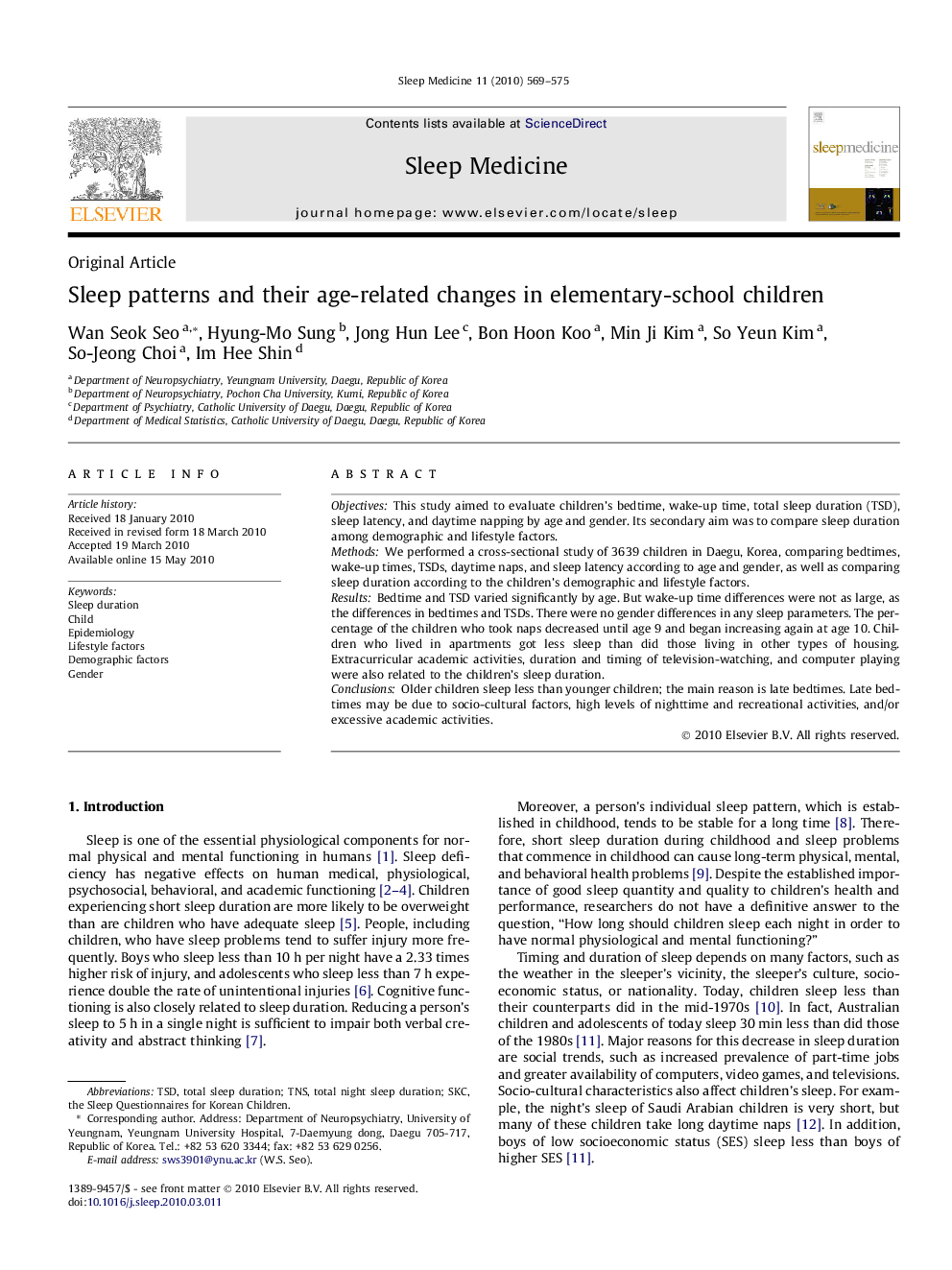| Article ID | Journal | Published Year | Pages | File Type |
|---|---|---|---|---|
| 3176891 | Sleep Medicine | 2010 | 7 Pages |
ObjectivesThis study aimed to evaluate children’s bedtime, wake-up time, total sleep duration (TSD), sleep latency, and daytime napping by age and gender. Its secondary aim was to compare sleep duration among demographic and lifestyle factors.MethodsWe performed a cross-sectional study of 3639 children in Daegu, Korea, comparing bedtimes, wake-up times, TSDs, daytime naps, and sleep latency according to age and gender, as well as comparing sleep duration according to the children’s demographic and lifestyle factors.ResultsBedtime and TSD varied significantly by age. But wake-up time differences were not as large, as the differences in bedtimes and TSDs. There were no gender differences in any sleep parameters. The percentage of the children who took naps decreased until age 9 and began increasing again at age 10. Children who lived in apartments got less sleep than did those living in other types of housing. Extracurricular academic activities, duration and timing of television-watching, and computer playing were also related to the children’s sleep duration.ConclusionsOlder children sleep less than younger children; the main reason is late bedtimes. Late bedtimes may be due to socio-cultural factors, high levels of nighttime and recreational activities, and/or excessive academic activities.
